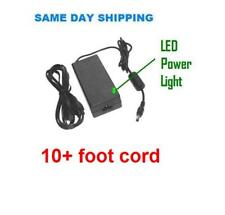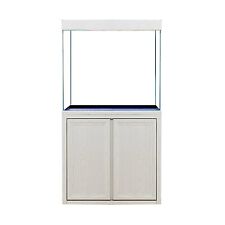How Safe is Invisible Fencing? What the Average Dog Owner May Not Know

Electric fences are growing in popularity. The reasons people using these or considering these fences have given me are varied with the most popular being: invisible fences are inexpensive; invisible fences are easy to install; there is no visible fence line; these fences supposedly safely and humanely confine the dog to your property. But are invisible fences all they are touted to be? How many people considering or actively using this type of fence are aware of the drawbacks? I am only highlighting the major ones that I have experienced with various clients and consults.
My first concern is the safety of the dog being confined. Is there any protection using an invisible fence? No. The invisible fence only acts on the dog wearing the special shock collar. Loose dogs, wild animals and humans will have full access to your yard and your pet. There is nothing physical to deter them from entering your property. If your property line is not clearly defined, pedestrians (especially in regions without sidewalks) may inadvertently walk into the dog’s territory. If your dog charges the perimeter at a pedestrian, it may be assumed your dog is loose and the pedestrian react one way or another. There is nothing to deter the theft of your dog. Dog thefts are a reality of life and owners must make it less attractive for someone to walk off with their pet. Not to mention the danger of illness such as rabies or injury from fight with wild or stray animals having easy access to the yard. Invisible fences offer no physical security for your dog.
How well do invisible fences confine your dog? Is it as securely as people are led to believe? Invisible fences may not confine your dog at all after time. I am amazed at how many dogs learn to ignore the shock. I love going to a house and being told "Bongo never crosses the fence line" as the dog dashes into the street to greet me, crossing the fence line and ignoring the shock collar. Many owners remove the collar once they feel the dog is trained so there is no more shock. But many dogs learn that once collar is off, nothing is holding them back.
I have watched dogs of clients slowly test the fence and show signs of building up their tolerance levels to the collar. Once a dog builds up a tolerance to the shock, there is nothing holding him in the yard. Fast moving objects can excite the drive to chase, pedestrians or animals close to the property line may bring out the natural urge protect their property. A dog excited to greet someone may cross the line forgetting the shock will happen. A dog that gets spooked by something may accidentally bolt through the fence line. Then what happens if the dog refuses to reenter the yard as the collar warns a shock will come? Dogs will tempt.
Dogs are dogs and cannot be relied upon to remember 100% of the time that they will be shocked if they cross the line. Finally, if you lose power, forget to change the batteries in the collar, some little critter chews through the line or the line just wears out due to elements, you lose your fence. Even dogs that have been maintained "reliably for years" with an invisible fence may decide to escape it one day. You may not realize your dog has learned to tolerate the shock or that the fence is inoperable or you have a dog that just does not care about the fence until tragedy occurs.
Finally, invisible fences are indiscriminant punishers and can lead to behavioral issues not readily apparent to the owner. Some of these issues may take time to develop. What is an indiscriminant punisher? Regardless of the action or intent of the dog, he will get a physical and sometimes painful correction from the collar. The dog gets punished all the time no matter what he is thinking or doing. Invisible fencing works through an adverse correction to the dog approaching the line: come too close and get hurt to some degree. To a dog, when a correction occurs it is for the action he is doing at the time of the punishment.
This is why trainers insist on never calling a dog and then punishing it. In your mind you may be punishing for chewing your shoes. However, in the dog’s mind punishment is for the action he was doing when he gets punished: coming when called. What if the dog was headed to happily greet the neighbor and then gets zapped? In his mind is he being zapped for approaching the perimeter or for greeting a human? We do not know. What if the starts to associate greeting happily with a zap – a negative? He can start to associate being friendly with negative. What if the dog is approaching the perimeter because he perceives a threat on the other side? He then gets zapped. In his mind the zap could be associated with the perceived threat. This can increase his threat level making him more likely to react.
If the dog associates the zap with his actions at the time, there is a chance he may stop giving warning as he approaches the perimeter. Now you have a dog that gives no warning signs before reacting. This is a very dangerous animal, as humans have no way of knowing its intent through body language. An invisible fence is indiscriminant in when it punishes and does not learn how to manage a dog humanely: it just responds to the proximity of the electric collar. I have worked with dogs that have developed fears of being on grass because they associated the shock with grass. Now these dogs are having issues as they refuse to potty on grass and are using decks, patios and even indoors as their potty spots.
Lastly, how cheap are these fences? Veterinary bills and/or a lawsuit can be far more costly than a good, barrier fence or secure dog kennel. Is the lack of security an electric fence provides worth saving a few bucks? Is it worth risking the chance that your dog may be the one to develop behavioral issues? It is far easier to work to prevent undesired behaviors than fix them later on.
In 22 plus years of working with dogs, I do not feel that invisible fences are a safe, humane or fair method of primary confinement for dogs. This type of fencing offers no protection to the dog and minimal protection from the dog to the general public. There are also behavioral issues that can arise through the use of these fences. Sadly, until one has been employed, there is no way of knowing how the dog will react over time to the fence. The safest form of confining dog to the property for its own protection and mental well-being as well as the protection of others is a good, physical, barrier fence.













